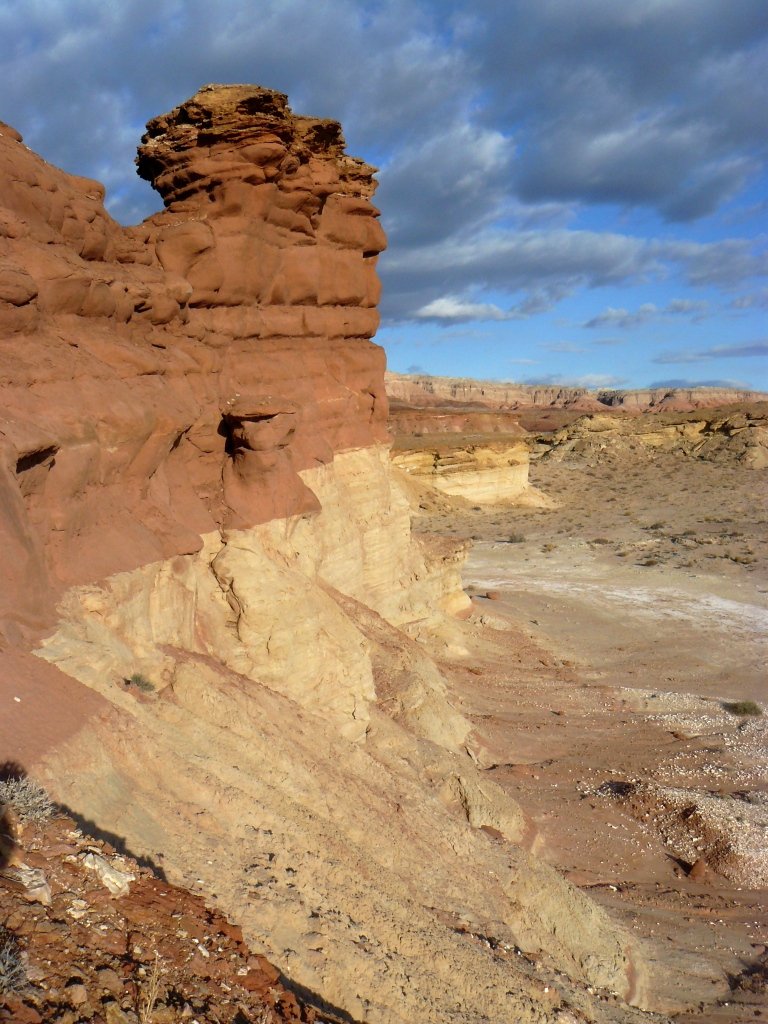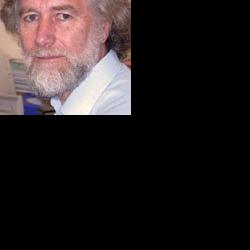Biography
Michael is Professor of Tectonics at the University of Cambridge. Undergraduate degree from Cambridge, DPhil from Oxford, held post-docs in Zimbabwe (University research fellowship) and Leeds (NERC), 1978-83 Lecturer, Geology, University of Western Australia. He is a fellow of AGU and the Royal Society.
He is currently a member of the NERC ESIOS Science Advisory Group and has recently been a member of Royal Society & RAE Shale Gas Review panel, the Independent Review Committee on Radioactive Waste Disposal and the Royal Society Working Group on future marine resources. Previously he served on a number of ODP (Ocean Drilling Program) and IODP (Integrated Ocean Drilling Program) committees including chairing the UK-IODP committee and chairing the committee that wrote the science plan for the current program.
Research
Current research interests include:
 My research combines field based, petrological and geochemical research projects with physical modelling in order to understand better the important processes which control global evolution. Most of the research has been related to tectonic processes within the solid Earth but most recently I have been working on solid earth-hydrosphere-atmosphere interactions and especially geological carbon storage.
My research combines field based, petrological and geochemical research projects with physical modelling in order to understand better the important processes which control global evolution. Most of the research has been related to tectonic processes within the solid Earth but most recently I have been working on solid earth-hydrosphere-atmosphere interactions and especially geological carbon storage.
The work on solid earth-hydrosphere-atmosphere interactions investigates the controls on long-term climate change through an understanding of river chemistry. The major long-term mechanism for removing carbon dioxide from the atmosphere is through weathering of silicates on the continents with the CO2 transported by rivers to the ocean where it is deposited as a carbonate. Our research examines how much the erosive exhumation of the Himalayas is responsible for climatic cooling over the last 50 myr.
The work on geological carbon storage includes work on the CO2 injection in the Sleipner field in the North Sea, on a site with leaking natural CO2 at Green River, Utah, on sampling a real-time CO2 injection experiment, and modelling of multiphase flow of CO2 and brine in heterogeneous media to elucidate rates of capillary and dissolution trapping.
My other interests include the thermal evolution of mountain belts, the tectonic processes which operated in the early Earth, the physical processes which control melting within the Earth and determining the significance of fluid-flow in metamorphic rocks.
Publications
Recent Publications:
Other publications can be found in the publications database here
On geological carbon storage
Cowton, L.R., Neufeld, J.A., White, N.J., Bickle, M.J., White, J.C., Chadwick, R.A., 2016. An inversemethod for estimating thickness and volume with time of a thin CO2-filled layer at the Sleipner Field, North Sea. Journal of Geophysical Research 121, 5068-5085.
Kampman, N., Busch, A., Bertier, P., Snippe, J., Hangx, S., Pipich, V., Di, Z., Rother, G., Harrington, J.F., Evans, J.P., Maskell, A., Chapman, H.J., Bickle, M.J., 2016. Observational evidence confirms modelling of the long-term integrity of CO2-reservoir caprocks. Nature Communications 7, 10.
Kampman, N., Bickle, M.J., Chapman, H.J., Evans, J.P., Purser, G., Zhou, Z., Schaller, M.F., Gattacceca, J.C., Bertier, P., Chen, F., Turchyn, A.V., Assayag, N., Rochelle, C., Ballentine, C.J., Busch, A., 2014a. Drilling and sampling a natural CO2 reservoir: Implications for fluid flow and CO2-fluid-rock reactions during CO2 migration through the overburden. Chemical Geology 369, 51-82.
Kampman, N., Bickle, M.J., Wigley, M., Dubacq, B., 2014b. Fluid flow and CO2-fluid-mineral interactions during CO2-storage in sedimentary basins. Chemical Geology 369, 22-50.
Bickle, M., Kampman, N., 2013. Lessons in carbon storage from geological analogues. Geology 41, 525–526.
Bickle, M., Kampman, N., Wigley, M., 2013. Natural Analogues. Reviews in Mineralogy & Geochemistry 77, 15-71.
Dubacq, B., Bickle, M.J., Evans, K., 2013. An activity model for phase equilibria in the H2O-CO2-NaCl system. Geochimica et Cosmochimica Acta 110, 229–252.
Kampman, N., Maskell, A., Bickle, M.J., Evans, J.P., Schaller, M., Purser, G., Zhou, Z., Gattacceca, J., Peitre, E.S., Rochelle, C., Ballentine, C., Busch, A., 2013. Scientific drilling and downhole fluid sampling of a natural CO2 reservoir, Green River, Utah. Scientific Drilling 16, p. 33-43.
Wigley, M., Dubacq, B., Kampman, N., Bickle, M., 2013a. Controls of sluggish, CO2-promoted, hematite and K-feldspar dissolution kinetics in sandstones. Earth and Planetary Science Letters 362, 76–87.
Wigley, M., Kampman, N., Chapman, H., Dubacq, B., Bickle, M., 2013b. In-situ re-deposition of trace metals mobilized by CO2-charged fluids. Geochemistry, Geophysics, Geosystems (G^3) 14, DOI 10.1002/ggge.20104.
Boait, F.C., White, N.J., Bickle, M.J., Chadwick, R.A., Neufeld, J.A., Huppert, H.E., 2012. Spatial and Temporal Evolution of Injected CO2 at the Sleipner Field, North Sea. J. Geophys. Res. 117.
Dubacq, B., Bickle, M.J., Wigley, M., Kampman, N., Ballentine, C.J., Sherwood Lollar, B., 2012. Noble gas and Carbon isotopic evidence for CO2-driven silicate dissolution in a recent natural CO2 field. Earth and Planetary Science Letters 341-344, 10-19.
Kampman, N., Burnside, N.M., Shipton, Z.K., Chapman, H.J., Nicholl, J.A., Ellam, R.M., Bickle, M.J., 2012. Pulses of carbon dioxide emissions from intracrustal faults following climatic warming. Nature Geoscience 5, 352-358.
Wigley, M., Kampman, N., Dubacq, B., Bickle, M., 2012. Fluid-mineral reactions and trace metal mobilisation in an exhumed natural CO2 reservoir, Green River, Utah. Geology 40, 555-558.
Bickle, M.J., 2009. Geological carbon storage. Nature Geoscience 2, 815-818.
Kampman, N., Bickle, M., Becker, J., Assayag, N., Chapman, H., 2009. Feldspar dissolution kinetics and Gibbs free energy dependence in a CO2-enriched groundwater system, Green River, Utah. Earth and Planetary Science Letters 284, 473-488.
Bickle, M., Chadwick, A., Huppert, H.E., Hallworth, M., Lyle, S., 2007. Modelling carbon dioxide accumulation at Sleipner: Implications for underground carbon storage. Earth and Planetary Science Letters 255, 164–176.
On river chemistry and chemical weathering
Bickle, M.J., Tipper, E.D., Galy, A., Chapman, H.J., Harris, N.W.B., 2015. On discrimination between carbonate and silicate inputs to Himalayan rivers. American Journal of Science 315, 120-166.
Chapman, H.J., Bickle, M., Thaw, S.H., Thiam, H.N., 2015. Chemical fluxes from time series sampling of the Irrawaddy and Salween Rivers, Myanmar. Chemical Geology 401, 15–27.
West, A.J., Arnold, M., Aumaître, G., Bourlès, D.L., Keddadouche, K., Bickle, M., Ojha, T., 2015. High natural erosion rates are the backdrop for present-day soil erosion in the agricultural Middle Hills of Nepal Earth Surface Dynamics 3, 363-387.
Fontorbe, G., De La Rocha, C.L., Chapman, H.J., Bickle, M.J., 2013. The silicon isotopic composition of the Ganges and its tributaries. Earth and Planetary Science Letters 381, 21-30.
Martin, C.E.A., Galy, A., Hovius, N., Bickle, M., Lin, I.T., Horng, M.J., Calmels, D., Chen, H.E., 2013. The sources and fluxes of dissolved chemistry in a semi-confined, sandy coastal aquifer: The Pingtung Plain, Taiwan. Applied Geochemistry 33, 222-236.
Turchyn, A.V., Tipper, E., Galy, A., Lo, J., Bickle, M.J., 2013. Isotope evidence for secondary sulfide precipitation along the Marsyandi River, Nepal, Himalayas. Earth and Planetary Science Letters 374, 36-46.
Calmels, D., Galy, A., Hovius, N., Bickle, M., West, A.J., Chen, M.C., Chapman, H., 2011. Contribution of deep groundwater to the weathering budget in a rapidly eroding mountain belt, Taiwan Earth and Planetary Science letters 303, 48-58.
Tipper, E.T., Gaillardet, J., Galy, A., Louvat, P., Bickle, M.J., Capmas, F., 2010. Calcium isotope ratios in the world’s largest rivers: A constraint on the maximum imbalance of oceanic calcium fluxes. Global Biogeochemical Cycles 24, 13.
Najman, Y., Bickle, M., BouDagher-Fadel, M., Carter, A., Garzanti, E., Paul, M., Wijbrans, J., Willett, E., Oliver, G., Parrish, R., Akhter, S.H., Allen, R., Ando, S., Chisty, E., Reisberg, L., Vezzoli, G., 2008. The Paleogene record of Himalayan erosion: Bengal Basin, Bangladesh. Earth and Planetary Science Letters 273, 1-14.
Teaching and Supervisions
A fully funded EPSRC project with CASE Partner Shell is still available:
Stabilising CO2: Multiphase flow in heterogeneous porous media
Supervisors: Jerome Neufeld (BPI) (DAMTP) (Earth Sciences) and Mike Bickle (Earth Sciences)
Heterogeneities within porous aquifers are present at a wide range of scales and may enhance the dissolution and capillary trapping of buoyant CO2 due to increased mixing, or alternatively limit the contact area through flow focusing towards high permeability pathways. Analogue fluid systems, which mimic the the effects of capillary forces in porous media or the dissolution of CO2 will be used to study the mixing in laboratory systems at the meter scale with centimetre scale heterogeneities. The results of the laboratory experiments will be used to inform numerical and mathematical models of mixing in layered strata. The laboratory and mathematical models of heterogeneity will be informed by geological models of potential North Sea storage aquifers. The research is part of a NERC-funded project joint with Sam Krevor (Imperial), Andy Chadwick (BGS) and Zoe Shipman (Strathclyde).

